Moser glass often serves as a synonym for quality Bohemia glassmaking. And no wonder, the history of the company to some extent really represents the history of Bohemia’s glassmaking. Whether we are talking about their beginnings in the 19th century, the early 20th century, the era during communism or in the current direction. (Although the history of the company began to be written much later, you can read more about the history of glass here.)
So what do imagine under the term Moser glass?
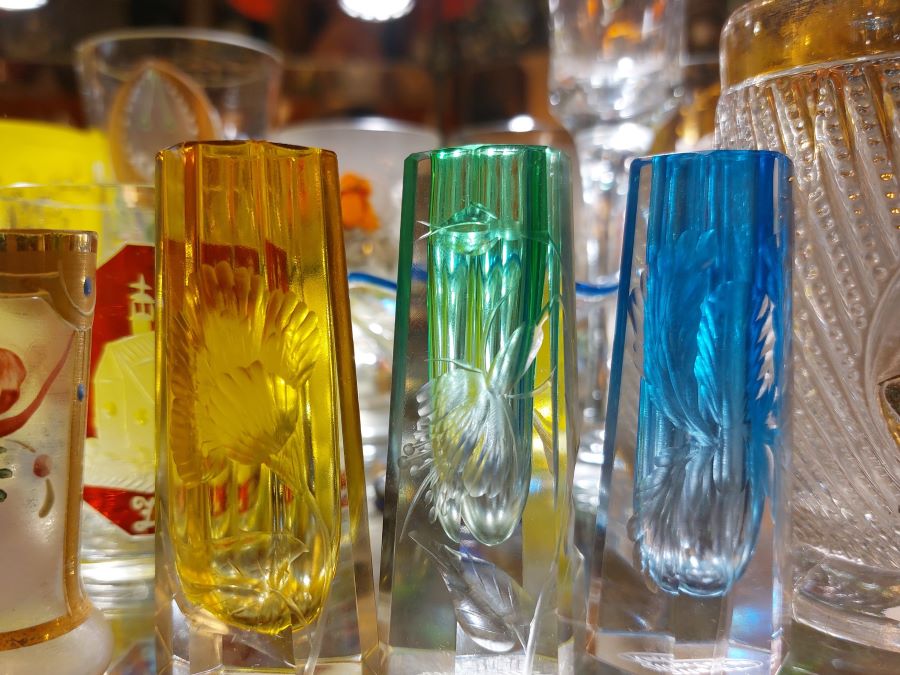
The beginning of Moser glass
In the 18th, 19th and early 20th centuries, it was very common for a single family to own a glassworks. And it didn’t have to be just one glassworks, a family could have several glassworks in the area as they grew and passed on their know-how. In addition to knowledge, another important factor for growth and prosperity was trade relations and innovation. So it was common for family members to travel the world, expanding their horizons and bringing them home. And at the same time, they strengthened business ties
The company was founded in Carlsbad in 1857 by Ludwig Moser. In fact, he had prepared for its foundation for quite a long time – by studying and doing some initial minor engraving work.
However, once he had established the company, he gradually expanded it and the company quickly gained stability thanks to his business sense as well as his fondness for glass. He appeared at world exhibitions, where Moser glass won awards, and drew inspiration.
The Golden Era
The golden era then came in 1911-1920. This was during the gradual handover of the company to his son Leo Moser, who was the business and artistic director. He brought quality designers (mainly German) to the glassworks and Moser glass had a real golden age.
And when we talk about golden times, it means that Moser glass was found at the pope’s, the English royal family, as well as it was loved by American businessmen.
Moser glass – deeply engraved flowers and oroplastics
Ludwig Moser was originally an engraver, and while wandering around Bohemia he also attended a drawing school in Prague.
It is not wonder that engraved crystal glass – and especially deeply engraved flowers – are very typical of Moser glass.
Another popular technique often seen in Moser glass is graded glass. For it, the base is colorless glass, which then progressively gradates (blends into a different color). As can be seen in the opening image or this photo with the flower, where the originally colorless glass graduates to an amber color. (And then the ruby color is hot glued on and the flower is born.)
The last characteristic technique for Moser glass that is worth mentioning is oroplasty. This involves etching into the glass, then filling it with gold paint. The glass is then often decorated with ancient motifs (such as Amazons or Centaurs).
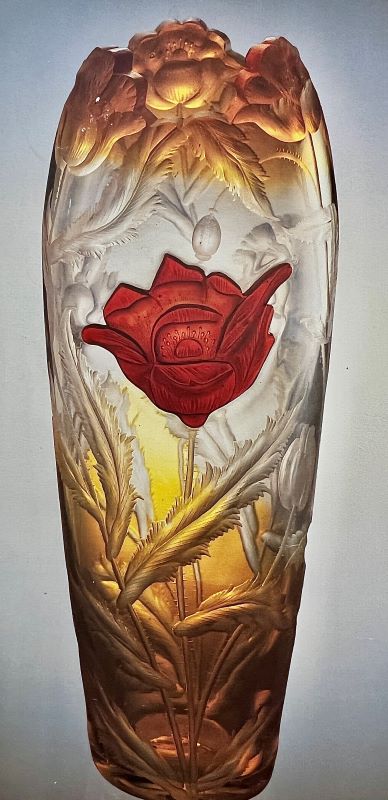
Get contemporary or collectible glass?
After 1920, Moser glass began to face economic problems and in the early 1930s the family reacted to the growing Nazi pressure and left the company. The company survived. And even though it was nationalised during communism, it was involved in the creation of designer glass. (For example, Jiří Šuhájek’s drawn thread is well known).
Today’s Moser benefits from the genius ideas of designers during the Ludwig and Leo Moser periods. It is possible to finish the pieces according to your own wishes which is a nice addition, especially if you have deep pockets.
Ironically, by specialising in a luxury clientele, it is now possible to buy some vintage or even collectible’s Moser glass cheaper than contemporary production. So if you are tempted by Moser glass, don’t hesitate to look around online or head straight to us – unlike other antique shops, we specialise in glass. We can help you choose truly authentic glass (you can read about how to identify such glass here).
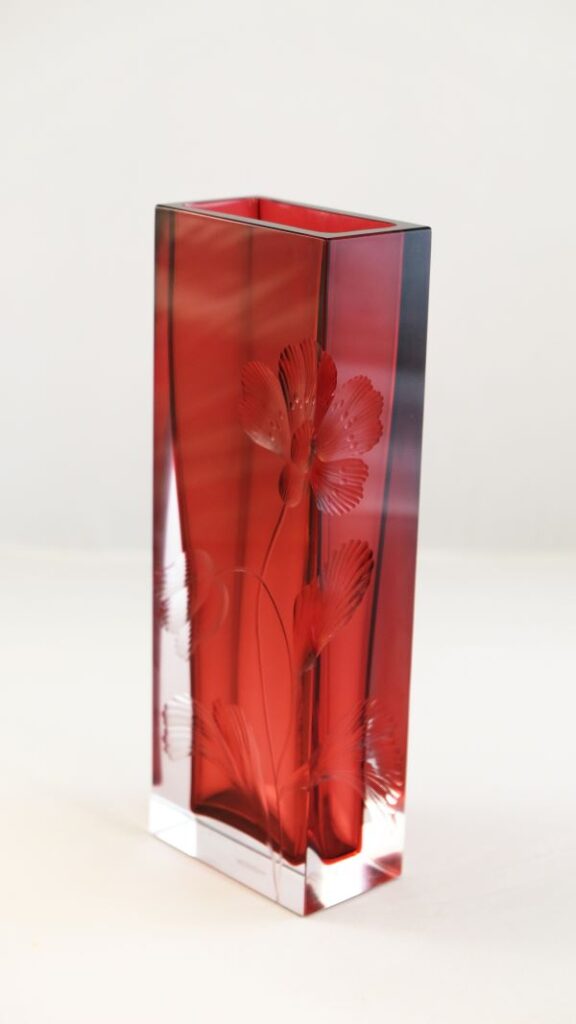
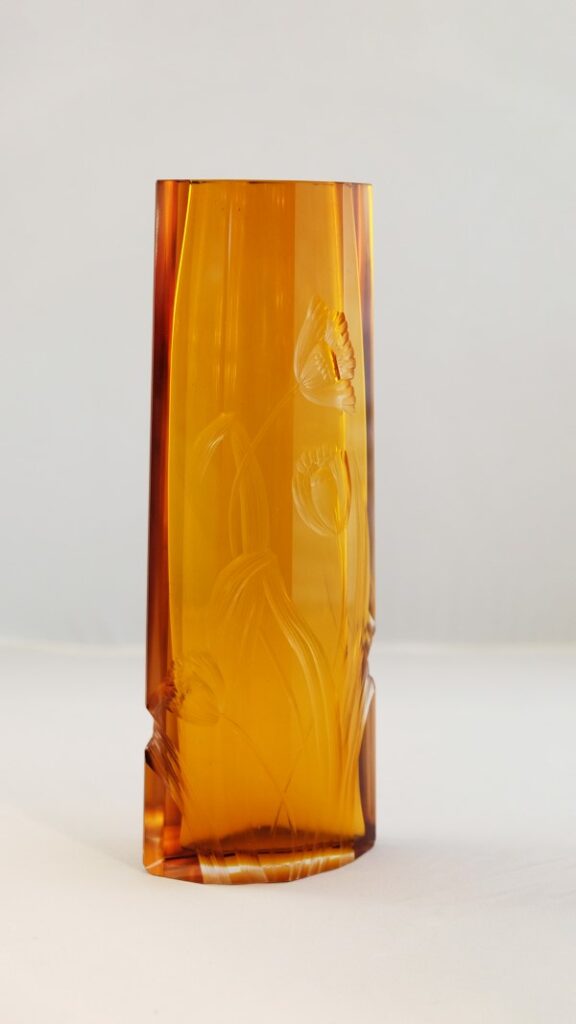
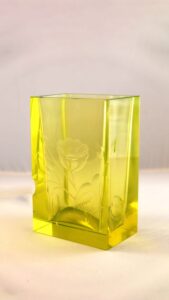
More about glass
How to recognize antique glass
Did you find glass objects in your grandparents’ attic, did you get your hands on an object that you think might be old and valuable? Or are you playing with…
Vintage metallurgical glass
The precisely engraved glass, the refraction of crystal glass, the timeless decors of art deco glass are amazing. But each of us at sometimes longs for an elegance that carries…









